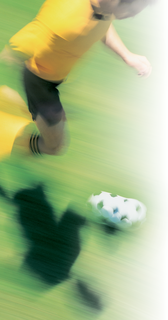
By Martin Loschwitz
In our age of digital cameras, most people manage to shoot fairly good pictures. But to really impress with your photos, you need something more spectacular. Have you ever considered image stitching? Image stitching is a digital technique that involves tacking multiple images together to form a large-format panorama image. Photo stitching is gaining popularity now that digital cameras are inexpensive and small enough to fit in your pocket. A good camera does not guarantee an attractive panorama - you need the perfect tool to stitch the images together, or you could spend days tinkering in GIMP.
The Linux community naturally has a solution. Hugin [1] is our insider tip for photo stitching on Linux and other Unix-style operating systems. The developers refer to Hugin as "an easy to use cross-platform panoramic imaging toolchain." In fact, Hugin includes three tools and a clear-cut interface with useful controls.
Hugin supports simple, drag-and-drop-based stitching - but you do need suitable raw image material. If you want to stitch photos you have taken, they must show a panorama view and have some overlap at the edges (Figure 1). The use of a tripod can make it easier to achieve a seamless fit between the tiles.
Online photo galleries - with panorama photos or simple snapshots as content - are all over the Internet. The most popular software solution now is undoubtedly Menaltos Gallery 2 [2]. On the downside, this PHP-based tool has turned out to be vulnerable to security holes in the past. One reason for the security problems is that Gallery 2 is overloaded with functionality. The online setup is a complex process involving several configuration steps, which is unnecessary for a user who just wants to display a couple of snapshots online.
This situation is what prompted Brett Parker to create the shell script Bpgallery [3]. Users set a couple of environmental variables and call the script with the photo folder as an argument. Bpgallery can't hope to achieve the functionality of Gallery 2, of course, but on the other hand, it doesn't need PHP support or a database server-side. Bpgallery creates a static HTML page that users upload to their servers.
If Bpgallery is too spartan for your liking, but Gallery 2 is still too complicated, Original [4] might be just the kind of compromise you are looking for. This small-footprint gallery tool is written in PHP. Ximian developer Jakub Steiner is now working on its development. Original gives users an attractive overview page with a main album and sub-albums. It sorts photos on the basis of user-definable criteria and gives users the option of viewing the image at the original scale or as a thumbnail preview.
If you are looking for a cross-platform audio player that can easily compete with Itunes, Atunes [5] could be just what you want. The software is based on Java and will run on basically any Java-capable operating system. On Linux, you additionally need Mplayer [6]. After you address the dependencies, Atunes gives users a friendly player that supplies some additional useful information about the tracks.
The program's statistics features are impressive: Atunes will create a diagram for each album to show you which tracks a user has played most frequently. At the press of a button, you can add lyrics, and Atunes will display them on the right of the player window when you run a track (Figure 2). Just like its role model, Itunes, Atunes supports genres and manages tracks in an intelligent database. A playlist with various track selection features rounds off the package. The interface changes to match the desktop theme on most host operating systems, and this gives Atunes a very clear and harmonious appearance. If you are interested in learning more about the artist or group, you can jump directly from Atunes to Google Video, Youtube, or Wikipedia.
Photo albums, jukeboxes - the only thing we're missing to convert a PC to a full-fledged multimedia platform is a TV and video recording tool. Enter Freevo [7]. The developers refer to their software as a "Home Theater PC Platform." The intuitive GUI gives users access to functions for playing movies and music (Figure 3).
If you have a TV card installed in your machine, Freevo will also display live TV, including an electronic program guide for digital cards. And the photo album feature makes Freevo a perfect digital slide projector.
Freevo comes with an easy web interface and even supports remote control. Themes give users the ability to customize the program appearance. The Freevo developers warn users that the project is still under heavy development and that some components might not work properly from time to time; on the other hand, the other Linux TV alternative, Mythtv [8], is also at an early stage of development.
| INFO |
|
[1] Hugin homepage: http://hugin.sourceforge.net
[2] Gallery 2: http://gallery.menalto.com [3] Bpgallery: http://www.sommitrealweird.co.uk/development/bpgallery.html [4] Original: http://jimmac.musichall.cz/original.php [5] Atunes: http://www.atunes.org [6] Mplayer: http://www.mplayerhq.hu/design7/news.html [7] Freevo: http://freevo.sourceforge.net [8] Mythtv: http://mythtv.org |